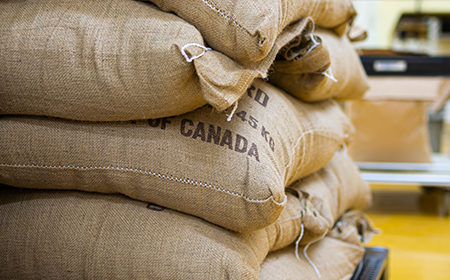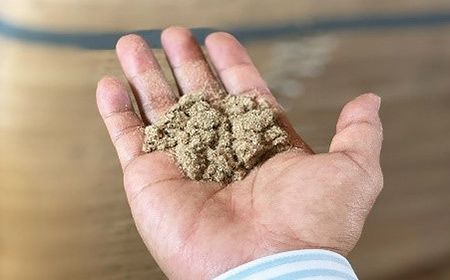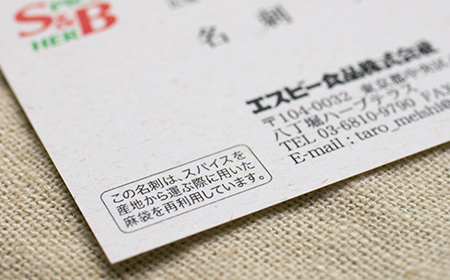Based on our corporate philosophy of "Bring natural life and happiness to every household," the S&B Foods Group recognizes preservation of the global environment as an important management issue, and aims to reduce the impact our business activities have on the environment and to contribute to a recycling-oriented society.
Basic Environmental Policy
- 1Compliance with domestic laws and regulations
- 2Environmental aims and target setting
- 3Reduce impact on the environment
- 4Product development
- 5Environmental education
- 6Coexistence with the community
Establishing Medium to Long-term CO2 Emission Reduction Goals
("2050 Carbon Neutral" goal)
The S&B Foods Group works to reduce the impact on the environment based on our Basic Environmental Policy.
Although we have made progress in efforts to reduce CO2 emissions, we have set the new "2050 Carbon Neutral" goal.
S&B Foods Group Overall CO2 Emission Reduction Targets
- 1We aim to become carbon neutral by 2050.
- 2We aim to cut CO2 emissions by 50% by 2030.
(Scope 1 or 2 equivalent compared to FY2019) - 3We aim to cut CO2 emissions in the supply chain by 30% by 2030.
(Scope 3 equivalent compared to FY2019)
Reducing CO2 Emissions
The S&B Foods Group’s CO2 emissions for fiscal 2023 totaled approximately 26,000 t-CO2, including Scope 1 emissions directly related to business activities and Scope 2 indirect emissions. The total CO2 emissions for the entire supply chain including those in Scope 3 categories such as product use, disposal, and transportation, employee business travel and commuting, and other emissions amounted to approximately 380,000 t-CO2, with Scope 3 emissions accounting for approximately 90% of the total.
For Scope 1 and Scope 2, we have reduced total CO2 emissions by 1,978 t-CO2 compared to fiscal 2022 as a result of efforts toward more efficient product production at our factories.
We will continue to look into energy conservation measures, switching to fuels that produce minimal CO2, and the use of renewable energy sources such as biomass and solar power.
With respect to Scope 3, because capital investment was limited, CO2 derived from capital goods decreased in fiscal 2023 compared to fiscal 2022. For Scope 3 overall, CO2 from purchased raw materials and CO2 emitted during use of sold products account for the majority. Therefore, we will continue efforts such as the procurement of raw materials with lower environmental impact, use of microwaveable pouches, and making time-saving cooking suggestions while also stepping up communication and coordination with raw materials suppliers regarding CO2 emission reduction.
Initiatives to Reduce CO2 Emissions
Use of Materials with Lower Environmental Impact
By using biomass plastic for some of the tray containers for curry/stew sauce mix products such as Golden Curry, Golden Hayashi, and Koi Stew, we have been able to reduce CO2 emissions by approximately 108 tons*1 per year.
Furthermore, for the Western-style spice series ORGANIC SPICE, biomass plastic was used for the inner stopper for the bottle variety, the printing method was optimized by switching from oil-based gravure printing to digital printing for the pouch variety, and recycled materials were used for some of the materials, resulting in an approximately 40% reduction*2 in CO2 emissions related to packaging compared to the previous specifications.
*1Calculated by S&B Foods based on production volume in 2023
*2
・The scope of calculation of CO2 emissions includes the following related to packaging: (1) Procurement and production of ingredients, (2) Manufacturing, (3) Transportation, and (4) Disposal and recycling
・Calculated as emissions per lot based on the sales forecast for the ORGANIC SPICE pouch series
・Includes the effects of changes in printing methods, use of recycled materials, implementation of combination printing, etc.
・Calculation results have been reviewed by a third party
Expansion of Microwaveable Products
S&B Foods has established microwave compatibility of household ready-made sauces in pouch as a KPI within the non-financial targets of the Medium-Term Business Plan, with a target of 40%. In fiscal 2023, we reached 71.6% compatibility for such sauces thanks to converting our Uwasa no Meiten series of ready-made sauce in pouch products to be microwave compatible. This is expected not only to shorten and simplify cooking, but also to reduce CO2 emissions associated with the cooking process.
Expanding Installation of Solar Panels at Group Plants
The new plant of S&B Sankyo Foods, a Group company that started operation in 2022, has installed 660 solar panels on its roof since October 2023. The electricity generated can supply the equivalent of 11% of the plant’s electricity needs, resulting in a reduction of approximately 114 tons of CO2 emissions per year.
Promoting Reduction and Recycling of Waste Products
The S&B Foods Group’s total volume of waste product output*1 decreased by approximately 10.5% (747 tons) year on year in fiscal 2023, and our recycling rate*2 was 95.9%. Of this amount, for food waste we made efforts to adjust production volume to meet demand, but demand fluctuated greatly due to weather conditions caused by heat waves and other factors, resulting in a slight increase compared to fiscal 2022.
*1Total waste product output: Waste discharged or transported out of a business operator's grounds (excluding shipped items in line with the provision of products and services).
*2Recycling rate: Reuse, recycling, and heat recovery ratio (thermal recycling) from among the total waste product output.
Reducing Water Consumption
At the S&B Foods Group, we are organizing our product lineup, reevaluating our manufacturing processes, and restructuring factories to reduce our water consumption.
In fiscal 2023, this decreased by approximately 10% versus fiscal 2022 as a result of efforts toward more efficient production.
Gunny Sack Recycling
Some spices and herbs, which are the core ingredients for the S&B Foods Group, are transported to the factories in "gunny sacks" from growing areas around the world.
Instead of disposing of the "gunny sacks," the "jute" they are made of can be recycled by crushing it and mixing the fibers into a pulp to make paper. This paper has been used for our business cards since 2019.
 Spices and herbs transported in gunny sacks
Spices and herbs transported in gunny sacks Crushed gunny sacks
Crushed gunny sacks Business cards made from pulped "jute" fibers
Business cards made from pulped "jute" fibers
